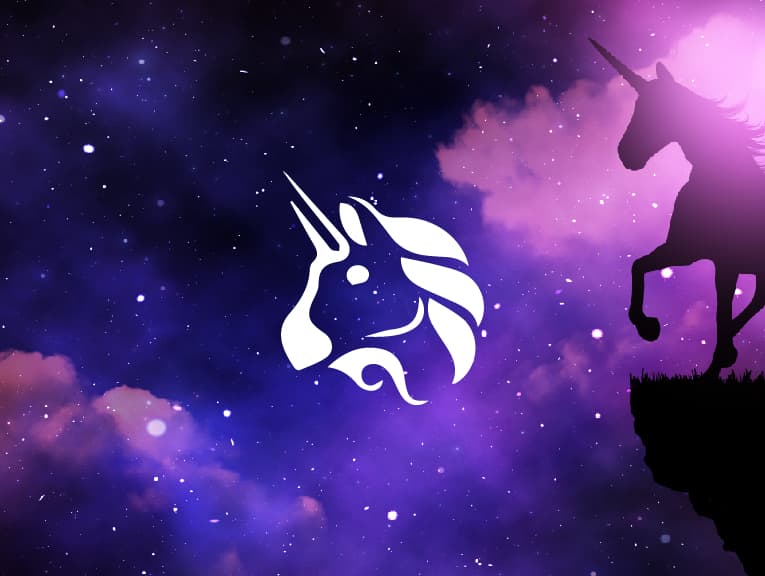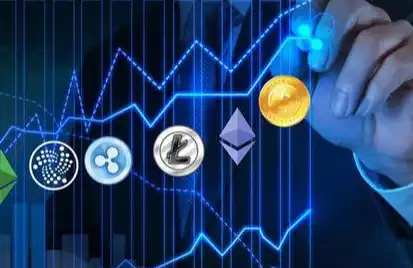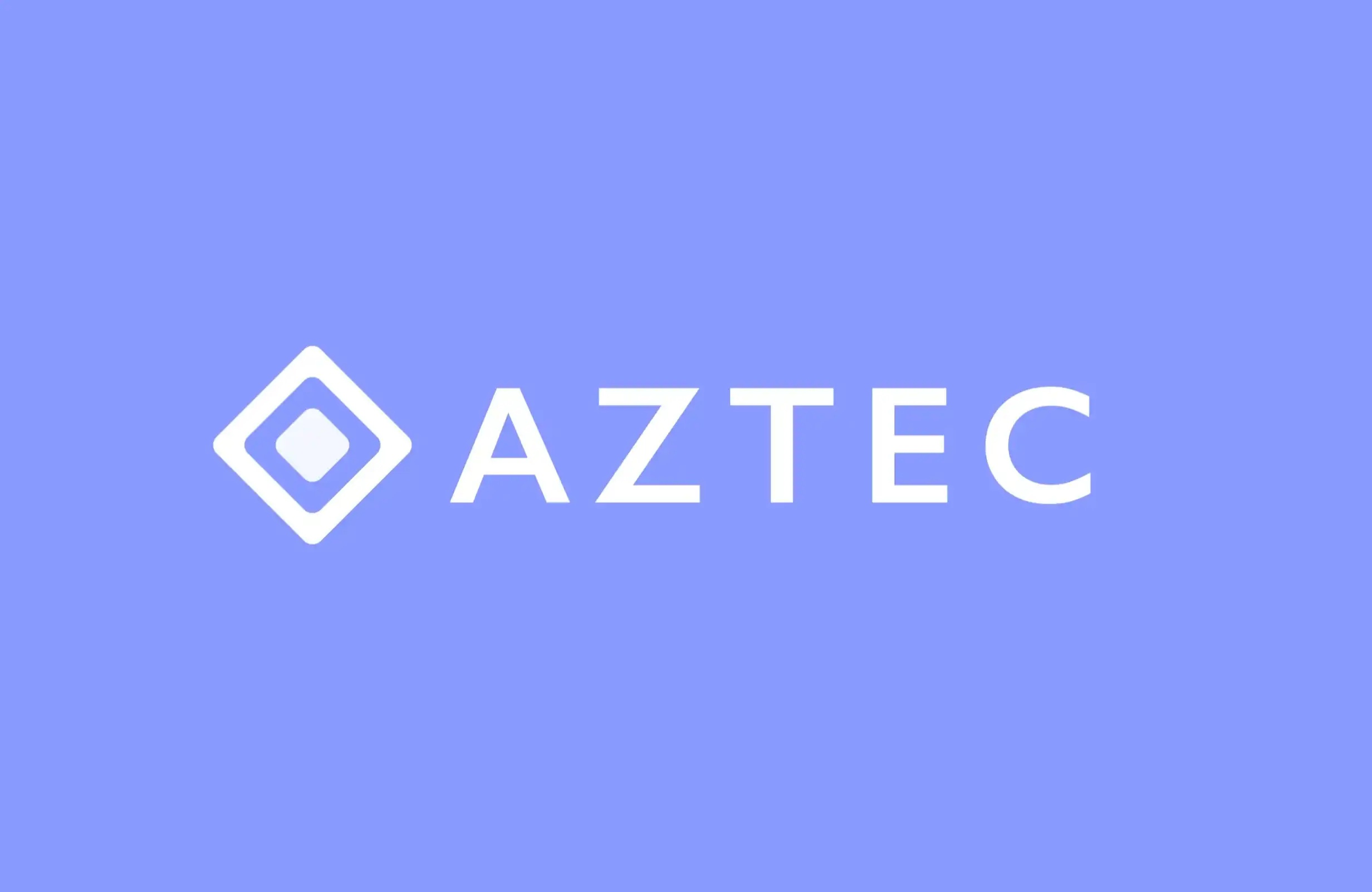Entry to the DeFi world: Talk about Uniswap in the eyes of blockchain developers
Podcast# ep.01 - chatting with chenjia404 about the mayflower of the DeFi world -Uniswap
原文来源: Shifting
本期内容由播客
Shifting Podcast 整理而来,
Shifting 是一档围绕加密货币、区块链、Web3 展开的深度播客,希望可以为听众提供价值视角和信息。以下为 Shifting 本期播客的⽂稿,与⾳频内容相较稍有修改以便听众阅读,本期嘉宾:chenjia404 (区块链开发者)
Xuanhao:Hello and welcome to Shifting. I'm Xuanhao Wang. This podcast focuses on cryptocurrencies and Web 3 to provide more perspective and information, while welcoming feedback from listeners and the community. The podcast content and guest sharing represent personal views and do not constitute any financial investment advice.
Xuanhao:I'm going to talk to you about Uniswap (or Uni later) because if we look back at the explosion of the crypto world starting in 2020, DeFi should be the defining event. So if we go back to DeFi, Uniswap is probably the signature protocol. From the user's point of view, Uni should be the entry point to the entire DeFi world, taking on the most important transaction functions, and the product itself is only a few hundred lines of code.
Uni's team, publicly available, is actually 20-30 people, but at its peak $Uni's market cap was over $30 billion. So if you average it out, the human-efficiency ratio should be many times that of a traditional company. Nasdaq, by contrast, has a market cap of nearly $30 billion, but it employs more than 4,800 people. In that sense, crypto is a very different new field.
There are also some interesting stories about founders. For example founder Hayden Adams was a mechanical engineer at Siemens but was laid off and taught himself Solidity to make Uniswap the star protocol. Although Uni has passed its early days of heated discussion, it has unique long-term value as an iconic agreement and I think it still has a lot to teach us. So today we are going to talk about Uniswap again. Today we are going to talk about Uniswap with Chen Jia. Let Chen Jia introduce herself to you.
Chenjia404:Hi everyone, my name is Jia Chen and I am a developer with many years of blockchain development experience. I have been involved in the development of various supply chains and protocols. I am glad to share with you Uniswap.
Xuanhao:I heard musk and Lex Fridman do an interview and they were talking about currency and what money is. Musk's answer was roughly that money was actually digital information stored in many batch-processing mainframes, and that the Fed could modify the numbers. I think this answer is very much in Musk's style, sort of straight to basics or first principle. So what do you think Uniswap is from a similar perspective?
Chenjia404:Uniswap is a decentralized trading platform based on smart contracts. It operates entirely based on unmodifiable code and is automatically executed by smart contracts to complete transactions between users based on the transaction requests submitted by users. Uniswap's transaction price is determined by the proportion of assets in custody under the smart contract. Each transaction by a user affects the number of assets in custody, which in turn affects the price. Uniswap's asset prices will be synchronized with those of other centralized trading platforms because there will be arbitragors. Uniswap will also be able to list new tokens on its own to overcome the difficulties of traditional centralized trading platforms.
Xuanhao: Since not all of our listeners are probably familiar with Uniswap, please brief us on the other features of Uniswap.
Chenjia404:It mainly has several core functions. The first one is the transaction function. We usually call a transaction pair of swap (i.e. transaction) as flow pool, and each pool generally has two assets, which can be exchanged in the asset pool. Uniswap has also implemented asset swaps between multiple asset pools. For example, if there are two assets, A and B, both of them have A trading pool with USDT, but there is no asset pool of A and B. Uniswap can then convert A to USDT, and USDT to B, simultaneously switching A to B in A transaction.
Uniswap 同时还有另外⼀个功能,就是⽤⼾⾃⾏可以添加流动池,在传统的交易平台⾥⾯叫做创建交易对。⽤⼾可以把⾃⼰的 A 和 C 这两个资产上架 Uniswap,那么我可以添加⼀定数量的资产 A,添加⼀定数量的资产 C,那么 A\C 的⽐值就是当前的价格。每年有⾮常多的新项⽬在 Unisawp 率先开启交易,然后再去中⼼化交易平台 。⽬前的话有将近 7 万个交易对在 Uniswap⾥⾯交易,同时我们可以看另外⼀个数据,在以太坊的 gas 消耗中,Uniswap⼀般排⾏在前三左右。⼤概有 5% 到 10% 的 gas 消耗都是在使⽤Uniswap。
In addition, Uniswap has several other functions. One is flash lending, where users can lend a certain amount of money to Uniswap for some arbitrage activities within a block, within a transaction, and then return the same amount of money to Uniswap. This solves a lot of arbitrage activities, and arbitraggers may lack funds. Another is a time-weighted predictor, which in many DeFi protocols is required to price assets. Uniswap V2's time-weighted predictor solves the problem of price manipulation in the past by introducing a time-weighted price that can be averaged over, say, an hour or a day and then used for asset pricing in third-party agreements. The other is secondary applications based on Uniswap, such as fluid mining. I believe many friends have also heard that it is based on Uniswap flow pool LP pledge, and then mining, basically basically these functions.
Xuanhao:The main function is trading, then liquidity market making, flash lending, free coin printing and automatic routing of transactions, plus prognostic function for other protocols. I think things like free trade creation are really groundbreaking for features like this. If bitcoin is technically inviolable, Uniswap is technically inviolable. No matter where you come from, age, gender, wealth, political affiliation, everyone is an equal transaction user.
Also, features like the Lightning belt are interesting (although Aave made it first). What is interesting is that the function of lightning belt is no longer to do the products or logic of traditional finance on the blockchain, but to emerge entirely on the blockchain, there is no such thing as lightning belt in the traditional world. In addition to AMM being a major innovation for Uniswap, on-chain protocol governance is actually very interesting. For example, Uniswap's DAO is probably the largest DAO under management today, with around $2.4 billion in assets under management. I have also seen some governance related news, such as the DeFi education fund approved by the community vote. Could you talk a little bit about how this mechanism works?
Chenjia404:Any UNI holder can submit a proposal to introduce new features and then go through a process of community approval before implementation. Its process is divided into several stages: the first stage is temperature check, and 25,000 $UNI approval is required to proceed to the second step. The second step is a consensus check, which requires 50,000 votes, and the final stage is a governance proposal. After the first two steps, this step is more difficult and requires 40 million $UNI votes to pass. Uniswap set up this mechanism mainly to consider that if a small number of people make crazy proposals, say submit 10,000, the governance of the whole community will not be able to proceed, so there will be several stages. Each stage needs to have a certain threshold. After the first discussion is passed, the second stage, the third stage, and finally the topic to be discussed is a valid topic.
Xuanhao:那基本的模式就是分多个阶段,然后每⼀个阶段需要的 UNI 或者这种质押的 Token 数量会越来越⾼。通过⽐如说⼀些 Snapshot 这种⼯具进⾏投票表决,结果出来之后可能会再由社区的这些主要成员或者团队成员进⾏实际的操作。
Chenjia404:Because most of the proposals can't be executed automatically, some of the team members need to do multiple signings, or some of the team developers directly need to deploy to other chains, or modify the parameters of the contract.
Xuanhao: Well, that's actually a protocol DAO like this, and there's actually some differences in how automated or decentralized it is. For example, all voting is actually done off-chain, and only after the off-chain voting tools have produced a result, is it still necessary for the actual multi-signer controller, or the main member of the community, to execute the specific transfer of funds or the deployment of the on-chain contract.
Chenjia404:Yes, because technically speaking, there is no way to achieve an automation of many operations at present, only through some manual means to perform.
Xuanhao:If we look at Uniswap one part is contract code that runs on the blockchain without a license, and then the other part is the front end. And then today Uniswap is probably a very mature application that people take for granted, there are seven or eight billion dollars lock-up today, it's a household name DeFi protocol. But in fact, I think in the course of development of a product or agreement, people's opinions on it may change.
So if we go back in time, say back in May or June of 20, what was the view of Uniswap? Because I also saw some like Balaji, the former CTO of Coinbase, who was a little bit less bullish on Uni in May 20, and Multicoin, Dragonfly, they also didn't invest in Uniswap at first, thinking there were some problems with the design of the possible mechanism, So I think maybe at the time not everyone thought Uniswap was going to be a very prosperous or a very star deal.I don't know as a DeFi participant or practitioner of that period of time, what do you think of Uniswap's development?
Chenjia404:Uniswap's evolution needs to mention these decentralized trading platforms before Uniswap, such as the Bancor protocol. When Bancor first came out, it was well accepted by the industry, because blockchain has always pursued the goal of decentralization. However, there has always been a problem troubling the whole blockchain. The whole transaction process is very, very centralized. The creation of Bancor protocol introduced decentralized transactions to the whole blockchain, but Bancor protocol is not very useful due to some of its model design problems. After Uniswap came out, comparing Uniswap with Bancor, we found that Uniswap's trading model was very simple, but very practical, and it was very effective in tracking prices. Uniswap was favored by developers at the time, but it's possible to say that because Uniswap has certain drawbacks, such as slow transaction speeds and high miner fees, it may not be able to be fixed compared to traditional centralized trading platforms in the foreseeable future. However, it can only be said that because of its decentralized characteristics, it is impossible to avoid shortcomings at the same time.
Chenjia404:所以像 Coinbase 他们是做中⼼化交易平台 的,⼀笔交易那么基本上就在⼀秒之内完成。那么对于 Uniswap 这种可能需要 15 秒甚⾄⼏分钟的交易体验,⾃然他们会觉得交易体验上有很⼤的缺陷。但是对于很多区块链的从业者、⽤⼾来讲,追求的是整个⼀个去中⼼化过程。那么 Uniswap 通过这种机制能够实现在链上完全去中⼼化的交易,这是⼀个⾮常巨⼤的进步,在这⼀点上,时间的等待是可以接受的。

Xuanhao:那我觉得⽐如说像你刚刚提到的有⼀部分是贵的问题,有⼀部分是慢的问题,和中⼼化的交易平台
在交易体验上可能还是有⼀些差距,⽽且这个差距可能是由区块链本⾝决定的,所以在短期内可能也没有什么本质的、好的解决办法。那你觉得在未来的话⽐如说像 Uniswap 和 Binance(当然现在绝⼤部分的交易量还是垄断在中⼼化的交易平台
)未来的交易量分布⼤概会是什么情况呢?⽐如说⼤量的交易量会到中⼼化交易平台,还是说两者会是⼀个⻓期共存的状态。
Chenjia404:⽐较头部的资产,肯定会⽐较多交易量在中⼼化交易平台,因为中⼼化交易平台它的使⽤速度体验确实会更好。但是更多的⻓尾资产和以及涉及智能合约的资产,它会去 Uniswap 这种去中⼼化交易平台进⾏交易。还有⼀点就是 Uniswap 的使⽤⻔槛对于普通⽤⼾来讲相对⽐较⾼⼀些,它需要了解完整的创建钱包、矿⼯费、钱包授权这⼀套,⽽在中创交易平台 相对会简单很多。可以预⻅的未来,中⼼化交易平台肯定还是整个市场的主流,但是去中⼼化交易平台 的占⽐会也不断提⾼。但是因为⼀些去中⼼化的原因,它的体验上肯定会有⼀定的差距,这也会阻⽌⼀些新⼈玩家的使⽤,但是随着技术的发展,那么⼤家对新技术的掌握也会越来越深⼊,去中⼼化交易平台 的占⽐也会不断的提⾼。
Xuanhao: Since layer Two is going to be a big development in the future, we'll probably see some improvement in addressing the slow and expensive issues in the Ethereum layer. So if a protocol like Uniswap is deployed at Layer 2, will it be an order of magnitude more expensive or slower?
Chenjia404:There will definitely be an improvement, but there may be some problems involved. For example, his native assets can be used at Layer 2, but many non-native assets may not cross over, which is also a problem. Because a lot of the assets in Uniswap are non-native, long tail assets.
Xuanhao: Do you mean that if these non-native assets were to migrate to Layer 2, there would be a lot of resistance?
Chenjia404:Yes, because both Layer 1 and Layer 2 need flow pools, and the liquidity depth of many asset flow pools is not high, the relative cost of building two separate flow pools will be relatively high.
Xuanhao: Well, there's probably still some resistance to migration, and we probably need a process. In addition, I think the competitive pattern and competitive elements of on-chain protocols are also an interesting issue. For example, in the traditional business world, there is a concept of a moat that says, what are the key competitive advantages of a product company? I think this is actually a very interesting question for on-chain protocols as well. The first is that the on-chain protocols are largely open source, making it hard to have a secret formula or patent. However, the switching cost or switching cost of the user does not seem to be high. In the World of Web 2, for example, social networks like wechat, it actually has very high switching costs. Finally, the agreement on the chain does not seem to have the accumulation of data and content like wechat, at least for now. Platforms like Douyin and YouTube can deposit a large amount of content, which is difficult for other competitors to catch up with. What do you think the competitive advantage of on-chain protocols is built on at this point? Talk about Uniswap and spread other ideas if you have them.
Chenjia404:It has several core competitive advantages. First of all, Uniswap's popularity is relatively high in the global blockchain industry. Many new users and new funds will definitely give priority to Uniswap. Second is Uniswap has a first mover advantage and its flow advantage, its pool depth is by far the deepest, the deeper the pool depth, the better the overall trading experience because of the lower slip point. You can buy more assets for the same price, and you can sell more assets for more money. This advantage means that the experience is much better than other competitive products. There are also many related protocols that rely on Uniswap, such as its time-weighted price parameters, or clearing on Uniswap's side. Just like the strong are always strong, Uniswap, as a head agreement, will continue to accumulate those flows, funds, depth on himself, forming a strong moat.
Xuanhao: There are a lot of AMM dex like Uniswap, such as Sushi and Curve. Then they might innovate for specific application scenarios or short-term incentives. Of course, there are also some Dex based on order book, such as IDEX and 0X, whose performance is not good at present. Why do you think?
Chenjia404:主要的原因在于去中⼼化的订单簿交易平台 ,它的体验和中⼼化的订单簿交易平台 有很⼤的差距。同时它⼜没有流动池这种去中⼼化交易平台的⼀些便利,更多⼈在链上选择就 Uniswap 这种类型的交易平台 ,在链下就选择中⼼化的订单簿,这两者相对在他们⾃⼰的领域是⽐较优的⼀个选择。
Xuanhao: For example, Uniswap made some version updates or technological innovations, while other protocols were copied or forked. Because different Dex may have different application scenarios and business scenarios, Do you think this direct fork process will cause some other problems?
Chenjia404:Fork Uniswap 项⽬特别多,他们绝⼤部分就会原封不动抄袭,少部分会加上⾃⼰的⼀些激励机制,⽐如说交易挖矿、流动性挖矿或者些是⼿续费的再分配这些,从它的核⼼框架来讲 99% 和 Uniswap⼀样。这些竞品肯定对 Uniswap 的流量会有影响,但是他们主要是在⾮以太坊⽹络上运⾏。那么在以太坊上主要就是 Sushi 或者类似的那些⽐较⼩的产品在竞争,他对 Uniswap 的流量肯定有影响,但是他同时⼜把 Uniswap 这个标准推⼴出去了。现在可以看到基本上凡是涉及去中⼼化交易平台 的⼀些协议,那么它基本上都完全和 Uniswap 兼容。涉及资产定价、涉及资产交易的基本上也会和 Uniswap 兼容,让 Uniswap 成为事实上的标准。
Xuanhao: I think this is interesting, because there may be some examples in the traditional Internet field, for example, Google Chrome opened source its browser kernel Chromium, and then derived some other versions or browsers made by different companies based on Chromium. But in the end all of these browsers became a contributor to promoting the Chrome standard. So Chrome ended up being the de facto monopoly in the browser space.
Chenjia404:Yes, Uniswap is now the standard for sinochem trading platforms in the whole region. In addition, Uniswap V3 provides liquidity rewards. It is an NFT, non-homogeneity token, traditional Uniswap V2, and its liquidity pool certificate is a standardized token. If a competitor copied Uniswap 3's functionality, it would cause a problem. They are now offering a variety of mobile mining products, all of which are unavailable after moving to V3 or have to be done in a very cumbersome way. This is an important reason why many Uniswap competitors do not copy Uniswap V3.
Xuanhao: On top of that, there seem to be some top crypto VCS behind Uniswap. Paradigm invested in Uniswap in 2019, and VCS like Paradim didn't invest and just walk away. There is also some deep collaboration between the VC team and Uniswap's project team on product design and mechanic design. Maybe the top VC behind the team can give advice and help on capital and development path, which is also a source of competitiveness.
In my opinion, ecology is also very important. If a prosperous ecology can be developed based on an agreement, it may also be a point to construct competitiveness. Just like Ethereum, there are some differences between the public chain and the protocol. But in terms of Uniswap, what are some of the protocols and applications currently surrounding Uniswap upstream and downstream? Because DeFi often emphasizes composability, the most used Lego block may be relatively valuable, and Unisawp is still a fairly basic protocol. So what do you think the pattern is in terms of ecology? And then what are the roles around Uniswap?
Chenjia404:⽬前主要有⼏种类型的项⽬或者协议⽐较依赖 Uniswap。第⼀种⽐较常⻅的是很⽕的去中⼼化的 DAO(的 Token ),他们最开始第⼀个上架的交易平台就是 Uniswap,像最近还流⾏去中⼼化的投资 DAO(Cult)。他们协议⾥会涉及每笔交易的时候⾃动⼿续会抽成转移到社区的⾦库,这个功能就是基于 Uniswap 开发的。另外很多协议依赖 Uniswap 基于时间加权的预⾔机,借贷协议清算机器⼈也依赖 Uniswap 的交易功能。⼩狐狸钱包的 swap 功能会⾛ Uniswap 的池⼦。还有⼀些机枪池,它们可能也会在 Uniswap⾥⾯提供流动性。所以有挺多的协议,它会有基于 Uniswap 进⾏的业务,有不同的场景,Uniswap 算是⼀个使⽤和依赖⽐较多的⼀个底层协议。
Xuanhao: That's pretty much where there are some other components of the DeFi system on the chain, like a loan agreement, or some liquidity aggregation agreement or some revenue agreement, maybe Uniswap is used as a bottom revenue source. Then there is the other part of the wallet software, which is closer to the user, that may have some built-in swap functionality that is also routed directly to Uniswap. So the natural question is how deep is the binding between Uniswap and these different players in its ecosystem? For example, there is now a Dex that is better than Uniswap in every way, or a decentralized trading platform. If the current ecosystem players want to migrate to this new platform, will they have to pay a high cost? Time cost, development cost, technical difficulty, etc.
Chenjia404:If it is based entirely on Uniswap, the migration cost may not be high. However, if it is completely different from Uniswap, the migration costs are higher. The key point is a lot of protocols. Migrating to a platform other than Uniswap was not considered at the beginning of development, so its code could not be modified to add support. Most protocols basically cannot modify Uniswap support.
Xuanhao: Well, if you look at it like this, it has a fairly strong monopoly in the ecosystem, because there are a lot of protocols that are tied to it very deeply, because once your code is on-chain, there's no way to change it. If you want to do a version upgrade later or that kind of big difference iteration, there is still a high switching cost issue.
Chenjia404:Yes, because many protocols, especially simple, single protocols, have unchangeable contract code. Once you deploy, you rely on Uniswap's pool, on Uniswap's price budgeting machine. It's hard to stop a fast train to change its wheels.
Xuanhao: There's another talk about MEV, because Uniswap is also trading itself, and there might be some arbitrage on the MEV side based on on-chain trading. Would you like to talk to us about the fundamentals of this arbitrage?
Chenjia404:So just to make a quick point, when you're trading Uniswap, one of the options is the slip point, let's say you're trading 10% of the slip point, and now the price of Ethereum is $3000, let's say you're trading 10% of the slip point, so you can accept the maximum price of Ethereum is $3300. So you now order an ETH, submit the request to the blockchain, and the robot, or "clip," listens to your request. It found that the current price is 3000 dollars, immediately bought a certain amount of ETH in the pool, and raised the price to 3300 dollars. Maybe its average purchase cost is about 3150 dollars. So after your transaction request is executed by the robot, you actually bought ETH with the price of $3300. Then the robot sells ETH he bought before at $3,300, which can make a certain price difference, and the transaction user pays more money. Originally, you need $3,000, but now you need $3,300. There is a way to mitigate or optimize this "clip" attack, also known as sandwich attack. The user set the slide point of the price to 1%. That is to say, when the price is $3000, you can accept the price of $3030 at most to buy an ETH, and there will be no arbitrage space at this price, and the transaction will not be affected by MEV.

Xuanhao: So do you think arbitrage robots like MEV are here to stay? Because it may be said that due to the later improvement of some technologies or protocols, will gradually compress the market space of this piece. Because maybe we can also see some anti-MEV trading agreements from the user's perspective, trying to avoid the participation of these arbitrageurs. Do you think the market for this segment will get smaller and smaller in the long term?
Chenjia404:In the long term, I think the market will be even bigger because Uniswap's user base continues to grow. It has more trades that use higher slippage points, so there is arbitrage here. Because of the characteristics of blockchain, you have to broadcast a transaction first before it is packaged, so you can never solve the problem, and others beat you to the punch. The only way to do this is to be more friendly and prompt users to set the slide point to 1% or 5%, leaving no room for arbitrage for these "clips".
Xuanhao:那 MEV 这个机制还是由于区块链本⾝的⼀些特性,⽐如说交易打包的顺序,就是这个链的运作机制确实没有办法更改,所以可能⻓期来看 MEV 可能会⼀直存在。那除此之外⼤家可能还会⽐较关⼼⼀个链上协议的价值捕获机制如何?⽐如看起来⽬前 Uniswap 是 DeFi⽣态中最重要的⻰头协议,但是 UNI 这个 Token 的价值捕获机制你觉得怎么样?因为其实 Uniswap 现在在 DEX 领域的市场份额⼏乎接近 80%,形成了事实上的垄断,但是治理 Token 的价格其实并不理想,这也是⼀个⽐较有意思的现象, 不知道你在这个问题上怎么看.
Chenjia404:⽬前来讲的话,Uniswap 主要是作为治理 Token ,主要的权利就是是对⼀些决策进⾏投票,并不涉及回购分红这些。UNI 的持有者和 Uniswap 的利益关联没那么⼤,短期来讲它的价格是有⼀个瓶颈。这⼀块的话可能要看社区,后⾯通过投票有什么更多的机制或者产品能够给 UNI 赋能,让 Uniswap 的⼀些价值转移到 UNI 上去。
Xuanhao:关于价值捕获机制存在缺陷,但是⼜⼴泛应⽤成为基础设施的。这种例⼦其实也不少,⽐较极端的,⽐如以太⽹标准和 TCP/IP,⼤家其实每天都在⽤,但其实和价值捕获没有什么关系。那可能未来基于投票治理开启⼿续费分红,或者说通过⼀些
Token
的回购议案,可能会让这个市场发⽣⼀些变化,但在⽬前好像这些都还没有看到。
Chenjia404:Yes, there is such a voice in the community, but it has not gained much support. It also needs the $UNI holder community to come up with a plan with more supporters through internal discussion.
Xuanhao:关于 Token 分红这个问题,也有⼀些说法是 Uniswap 可能跟监管层还有⼀些博弈,因为如果你要是开启分红机制的话,可能就要受到 SEC 的⼀些监管或者影响,所以这还是⼀个⽐较模糊的问题。那说到这⾥,crypto 世界和传统世界的博弈其实也是⼀个⽐较有意思的话题。因为加密世界被⼤家所称道,也主要是因为抗审查、去中⼼化,⽆需准⼊这些特点。那现在对于⼀个协议来说,我觉得可以关于抗审查这⼀点聊⼀聊,⽐如现在 Uniswap 被监管部⻔或者强⼒部⻔打击,可能会在哪些⽅⾯受到影响,以及影响到什么样的程度。⽐如说⼀个具体的例⼦是去年 7 ⽉末,然后有⼀些 Token 被 Uniswap 迫于 SEC 的压⼒下架了,你怎么看这个事情。
Chenjia404:⾸先我们就像最开始说的 Uniswap 是⼀个运⾏在以太坊上的基于智能合约、⽆法修改的⼀个程序,它已经部署了,它的开发团队是⽆法让它停⽌运⾏的。⾸先保证了 Uniswap 可以持续运⾏下去。但是 Uniswap 的前端是由 Uniswap 团队进⾏控制的,团队可以因为⼀些政策对某些资产进⾏屏蔽处理,甚⾄可能因为政策把 Uniswap 的前端关闭,但是 Uniswap 的前端是可以⾃⾏搭建的,⽐如说国内的⽤⼾在使⽤Uniswap 的时候,很多是⾛的第三⽅的 Uniswap 镜像。也就是说⽽即使 Uniswap 官⽅团队因为政策的因素,把 Uniswap 前端关闭之后,也完全不影响⽤⼾使⽤ Uniswap。⽽且 Uniswap 中被屏蔽的 Token 还是可以在区块链进⾏交易,只是说⽆法通过 Uniswap 官⽅的前端进⾏交易。
Xuanhao: Well, basically, for users, they're interacting with the front end, but actually the front end is a little bit of an open thing, you might have some third party front ends, or some front ends that are hosted on servers in different countries or regions. So if you want to seal off all the front end, it's theoretically difficult. Blocking domain name resolution, such as blocking Uniswap domain name resolution in a region, is also an option. But it seems possible to solve this problem by adding other domains or migrating them. It doesn't seem to affect users that much. For some of the other Uniswap based on-chain agreements, or from a developer's perspective, there is no way to stop a contract that is already deployed on the chain, and Uniswap based businesses are not affected.
Chenjia404:Yes, Uniswap it's a smart contract running on Ethereum, so it can't be shut down, it can't be deleted. So Uniswap can run continuously and the front end can be set up by any third party.
Xuanhao:之前被下架的 Token ,虽然在 Uniswap 的前端没有办法交易,但是在 1inch(⼀个 DEX 的聚合协议)的前端可以进⾏交易。那实际上 1inch 就变成了 Uniswap 的⼀种⼴义上的前端,还是⽐较反脆弱的。我觉得我们还是聊了不少内容,从产品、赛道、竞争、监管这些⻆度都涉及了⼀些内容,也算⽐较⽴体地聊了聊 Uniswap。最后可以展望⼀下未来,Do you think Uniswap will continue to be a leader or a monopoly? Or five years from now, do you still think Uniswap is the most mainstream, basic on-chain transaction app?
Chenjia404:I am personally optimistic about the continued development of Uniswap team. Uniswap's V2 is a very good version, a very epoch-making product that solves many of the problems of the previous V1, but builds on the V2 with more advanced features in V3. I believe there may be V4 and V5 for Uniswap in the future, and Uniswap may remain the leader in the whole decentralized trading platform field for a long time.
Xuanhao:Ok, time will tell the rest and see if Uniswap will stay on top or be overtaken by upstarts. Thanks Chen Jia.
This article is submitted and does not represent the opinion of BlockBeats.
Welcome to join the official BlockBeats community:
Telegram Subscription Group: https://t.me/theblockbeats
Telegram Discussion Group: https://t.me/BlockBeats_App
Official Twitter Account: https://twitter.com/BlockBeatsAsia


 Forum
Forum Finance
Finance
 Specials
Specials
 On-chain Eco
On-chain Eco
 Entry
Entry
 Podcasts
Podcasts
 Activities
Activities
 OPRR
OPRR







